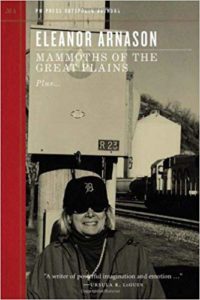Book Review: Mammoths of the Great Plains by Eleanor Arnason
On an alternate Earth, the mammoth lived into historical times, abiding with the bison and the Native Americans. But then Lewis and Clark saw their first mammoth, and reported on it to President Jefferson and the teeming masses of the East. This is the story of the disappearance of the mammoths, and how they reappeared.
This chapbook from PM Press is part of their “Outspoken Authors” series, mixing stories with essays and interviews of writers who have opinions. In this case, it’s Eleanor Arnason (1942-present), who is well known in the Minnesota science fiction community and also read elsewhere.
The title story is a long one, with a framing device of a girl visiting her grandmother on the Standing Rock reservation in the near future of this alternate history. The grandmother tells the tale of the mammoths, and how the women of her family became entwined with the fate of these creatures.
There’s a bit of world-building of “the present day” but it’s largely in the background, and there’s a fairly large jump from “and that’s how the first mammoth in decades was born” to “and now there are mammoths again, if you want to see them, go over to the casino.”
The story is told very much in the style of oral tradition, with the elder imparting family history (and perhaps some wisdom) to a child. It’s clear that Grandmother Liz is remembering events through her own lens, but she tries to be fair to those long dead. The tale meanders a bit, and might be boring for those only reading for the exciting mammoth bits.
There’s some period racism, never depicted as a good thing.
Also in this volume is “Writing SF During WWIII”, an essay adapted from Ms. Arnason’s guest of honor speech at Wiscon in 2004. It talks about the current time of instability, ecological crisis and liberation movements, and how science fiction can respond to these issues and help guide the future.
This is followed by an interview Eleanor Arnason gave to Terry Bisson in 2010, talking about her life story (“…I was raised by time travelers in a house of the future.”), her writing, activism, and politics. The last highlighted for me just how much has changed in the last eight years in the political world, and how much has not changed at all.
There’s a bibliography of the author’s work, and a short autobiography written in third person.
Recommended to fans of Eleanor Arnason, and those interested in a window into the life and thought processes of authors. Those just interested in fiction might want to wait until “Mammoths” is collected elsewhere.

